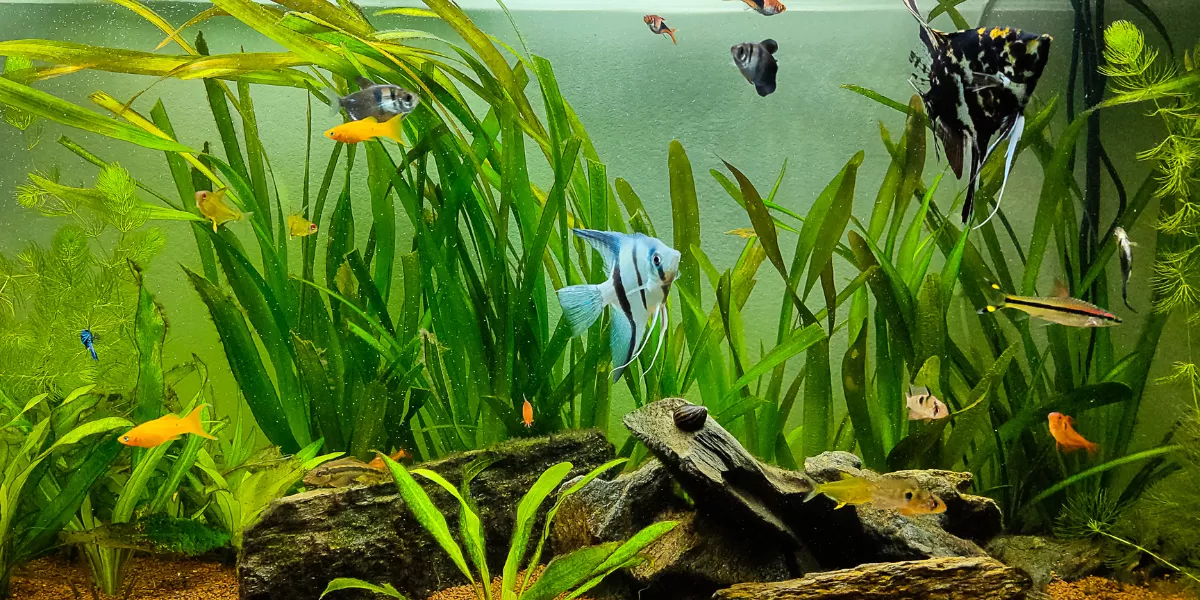
Enhance your freshwater aquarium with live plants to boost aesthetics, water quality, and fish health. Care for them by monitoring water parameters like pH and nutrients, ensuring proper lighting for photosynthesis, and fertilizing with essential nutrients. Remember to prune regularly to maintain plant vitality. Troubleshoot common issues like yellowing leaves or algae growth by addressing nutrient deficiencies and controlling algae overgrowth. By following these care tips, you'll nurture a thriving aquatic ecosystem that benefits both your plants and your fish.
Benefits of Live Plants in Aquariums
Adding live plants to your aquarium enhances the overall health and aesthetics of the aquatic environment. Not only do live plants provide a natural and visually appealing look to your tank, but they also serve several vital functions. Live plants help to oxygenate the water, which is essential for the well-being of your fish and other aquatic inhabitants. Through the process of photosynthesis, plants absorb carbon dioxide and release oxygen, creating a healthier ecosystem for your aquarium.
Furthermore, live plants play a crucial role in maintaining water quality. They help in absorbing nitrates, ammonia, and other waste products produced by fish, which can help prevent algae overgrowth and maintain a balanced ecosystem. By reducing these harmful substances, live plants contribute to overall water clarity and the well-being of your aquatic pets.
In addition to their practical benefits, live plants provide shelter and hiding spots for fish and other creatures in your aquarium, reducing stress and promoting natural behaviors. Overall, incorporating live plants into your aquarium not only enhances its beauty but also contributes to a healthier and more balanced aquatic environment.
Importance of Proper Care
Proper care is essential for maintaining the health and vitality of live plants in your freshwater aquarium. By providing the right conditions and attention, you can ensure that your aquatic plants thrive and contribute positively to your tank ecosystem. Regular monitoring of water parameters such as pH, temperature, and nutrient levels is crucial for plant health.
Ensure adequate lighting for photosynthesis and consider using a timer to regulate the light cycle. Properly fertilize your plants with essential nutrients like nitrogen, potassium, and phosphorus to promote growth. Prune your plants regularly to remove dead or decaying parts and encourage new growth.
Be mindful of algae growth, as it can compete with your plants for nutrients and light. Lastly, perform routine water changes to maintain water quality and keep your plants healthy. By dedicating time and effort to caring for your live plants, you can enjoy a vibrant and thriving freshwater aquarium.
Essential Tips for Plant Maintenance
For successful maintenance of live plants in your freshwater aquarium, prioritize regular monitoring of water parameters and diligent pruning to ensure optimal growth and health. Monitoring water quality parameters such as pH, ammonia, nitrite, and nitrate levels is crucial for the well-being of your aquatic plants. Ensure that these levels are within the appropriate range to support plant growth and prevent nutrient imbalances that can harm your plants.
Regularly inspect your plants for any signs of nutrient deficiencies, algae growth, or diseases. Remove any decaying or dead plant matter promptly to prevent it from affecting the water quality and spreading to other plants. Pruning your plants helps promote new growth and prevents overcrowding that can lead to poor circulation and light penetration.
Additionally, consider providing your plants with a balanced fertilizer to supplement any nutrients lacking in your aquarium. Be cautious not to over-fertilize, as this can create an imbalance and harm your plants. By following these essential tips for plant maintenance, you can ensure a thriving aquatic ecosystem in your freshwater aquarium.
Troubleshooting Common Plant Issues
To address common issues with your aquatic plants, start by identifying any visible signs of distress such as yellowing leaves or stunted growth. Yellow leaves could indicate a lack of nutrients, while stunted growth might be a sign of inadequate lighting. If you notice holes in the leaves, it could be due to nutrient deficiencies like potassium or iron.
Algae overgrowth is often a common problem in planted tanks and can be controlled by adjusting lighting duration or adding algae-eating fish. Ensure that your plants aren't overcrowded, as this can lead to competition for resources and hinder their growth.
Additionally, check your water parameters regularly to ensure they're within the ideal range for plant growth. Proper fertilization and the use of a nutrient-rich substrate can help combat nutrient deficiencies. By addressing these common issues promptly, you can ensure healthy and thriving plants in your freshwater aquarium.
Conclusion
Overall, incorporating live plants into your freshwater aquarium can provide numerous benefits such as improved water quality, oxygenation, and aesthetic appeal.
By properly caring for your plants through regular maintenance and monitoring, you can ensure they thrive and contribute to a healthy aquatic environment for your fish.
Remember to follow essential tips for plant care and be on the lookout for common issues to address promptly.
Happy planting!




